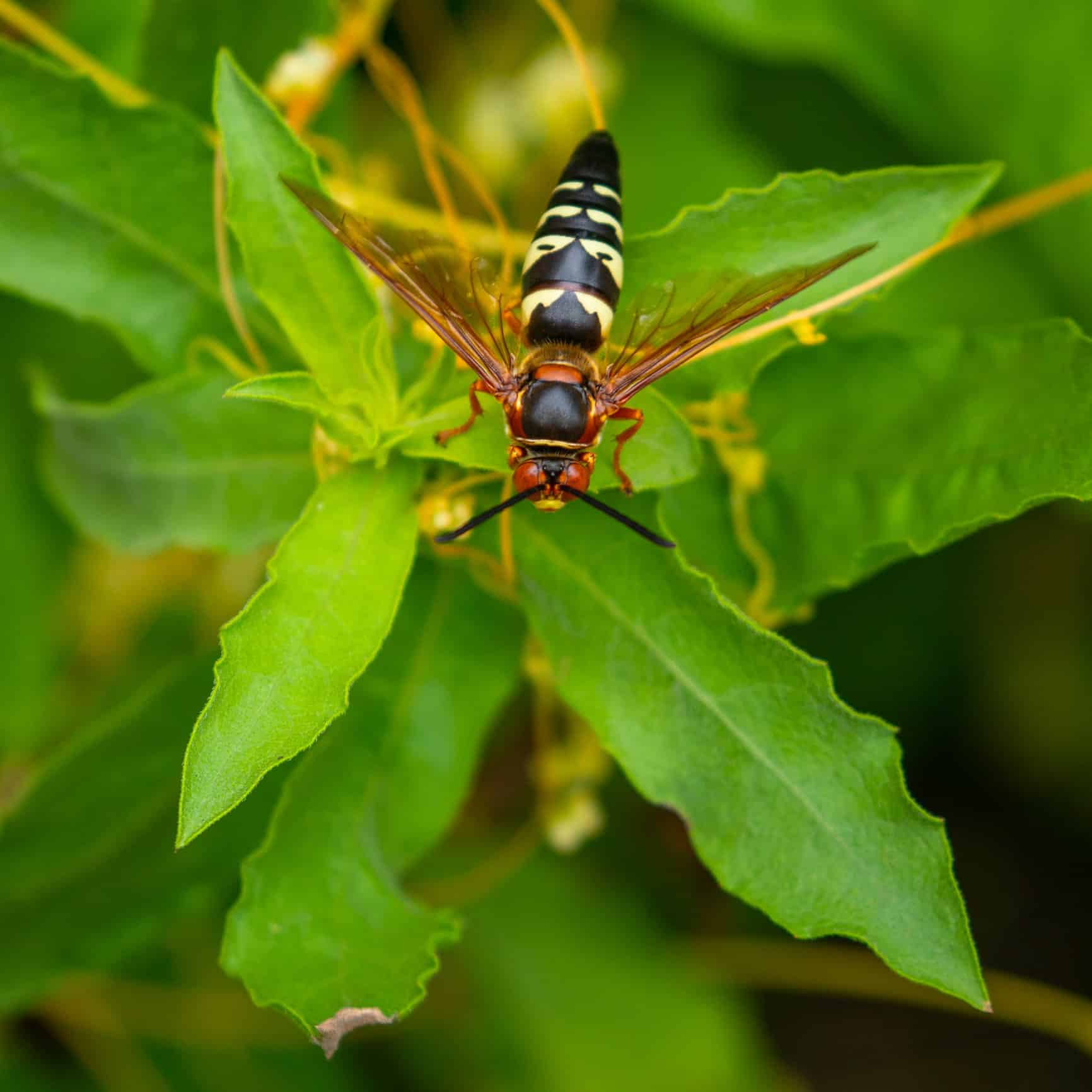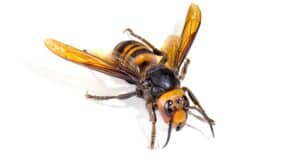Wasps are fascinating insects. Though most wasps sting, they are crucial for the health of the ecosystem. Many wasps parasitize insects that damage crops and gardens. They keep the population of arthropods such as spiders in balance. Wasps are also fairly good pollinators, though they’re not as adept as honeybees.
These insects are not keen to sting you. Unlike the aforementioned honeybees, stinging doesn’t eviscerate them, and they can sting again and again. But stinging puts them at greater risk of being killed or having their nest or colony eradicated. By the way, wasps that protect their nests or colonies are more likely to sting. Some social wasps, like baldfaced hornets, emit chemicals to call their sisters to come and help drive away the threat. Only female wasps sting, because the sting is a modified ovipositor, or a tube meant to deposit eggs.
Determining the Pain of a Sting
The Schmidt sting pain index determines the potency of a wasp sting. Justin Schmidt, a brave American entomologist, developed this index. He actually allowed arthropods to sting and bite him and rated the pain levels. The index rates the stings from 0, which is no pain at all, to 4, which is unbearable. Not only this, people who are allergic to wasp venom can have a reaction that requires quick medical attention. Here are some Colorado wasps and their sting levels.
Tarantula Hawk Wasp: Sting Level 4
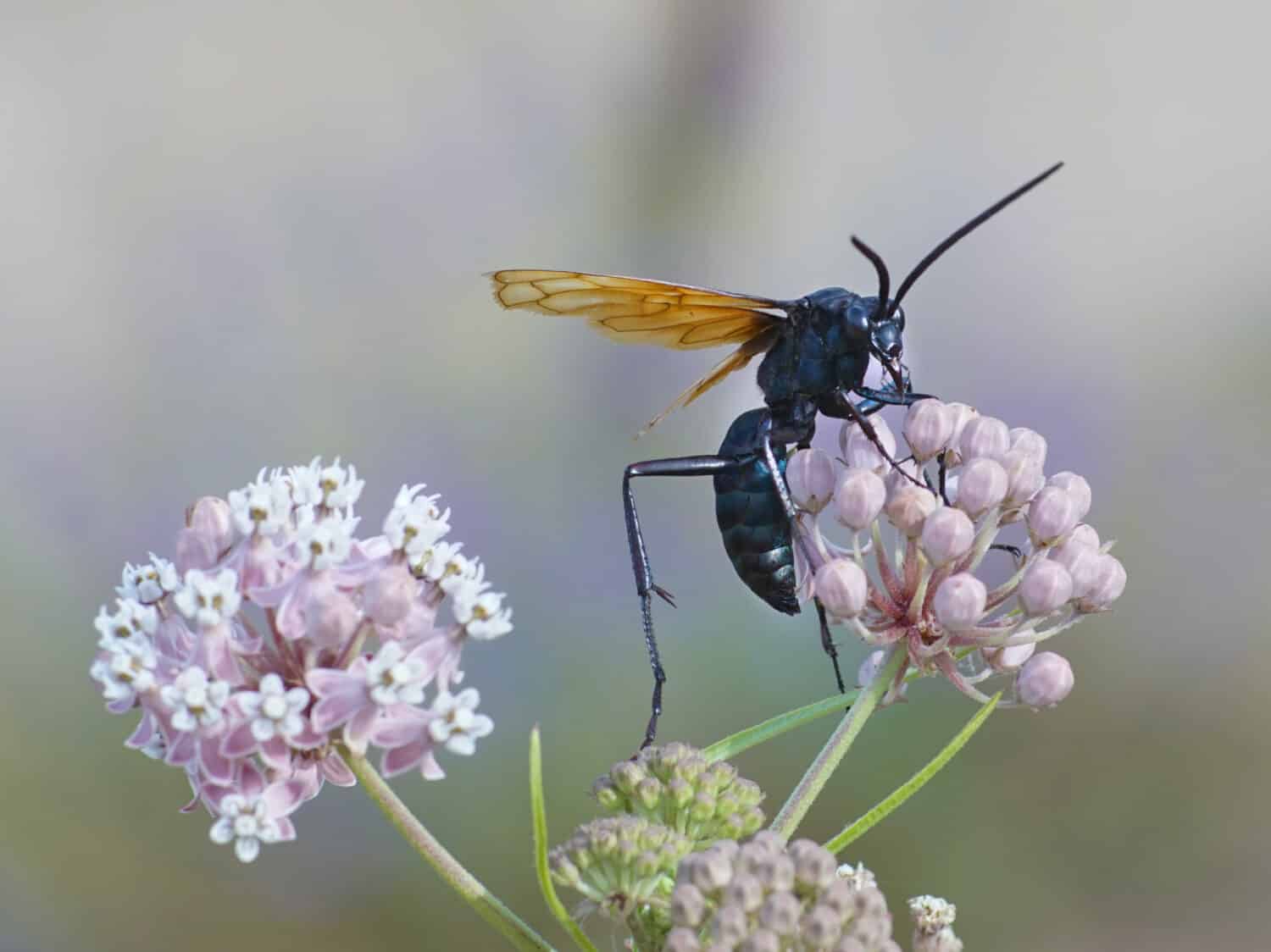
Tarantula hawk wasps can be identified by their blue-black bodies and orange wings.
©Richard Stephen/Shutterstock.com
This wasp is found generally in the southwest where the female hunts tarantulas to provide food for her growing larvae. This is a huge wasp that can grow as long as 2 ½ inches, with glossy, indigo-black bodies and orange wings. This coloration should tell potential enemies that the wasp is not to be messed with. Thankfully, the wasp isn’t aggressive, but if it is hassled, the sting is rated as a 4. This is tortuously painful. The intensity “only” lasts for five minutes, but it will be one of the longest five minutes of the victim’s life.
Velvet Ant: Sting Level 3
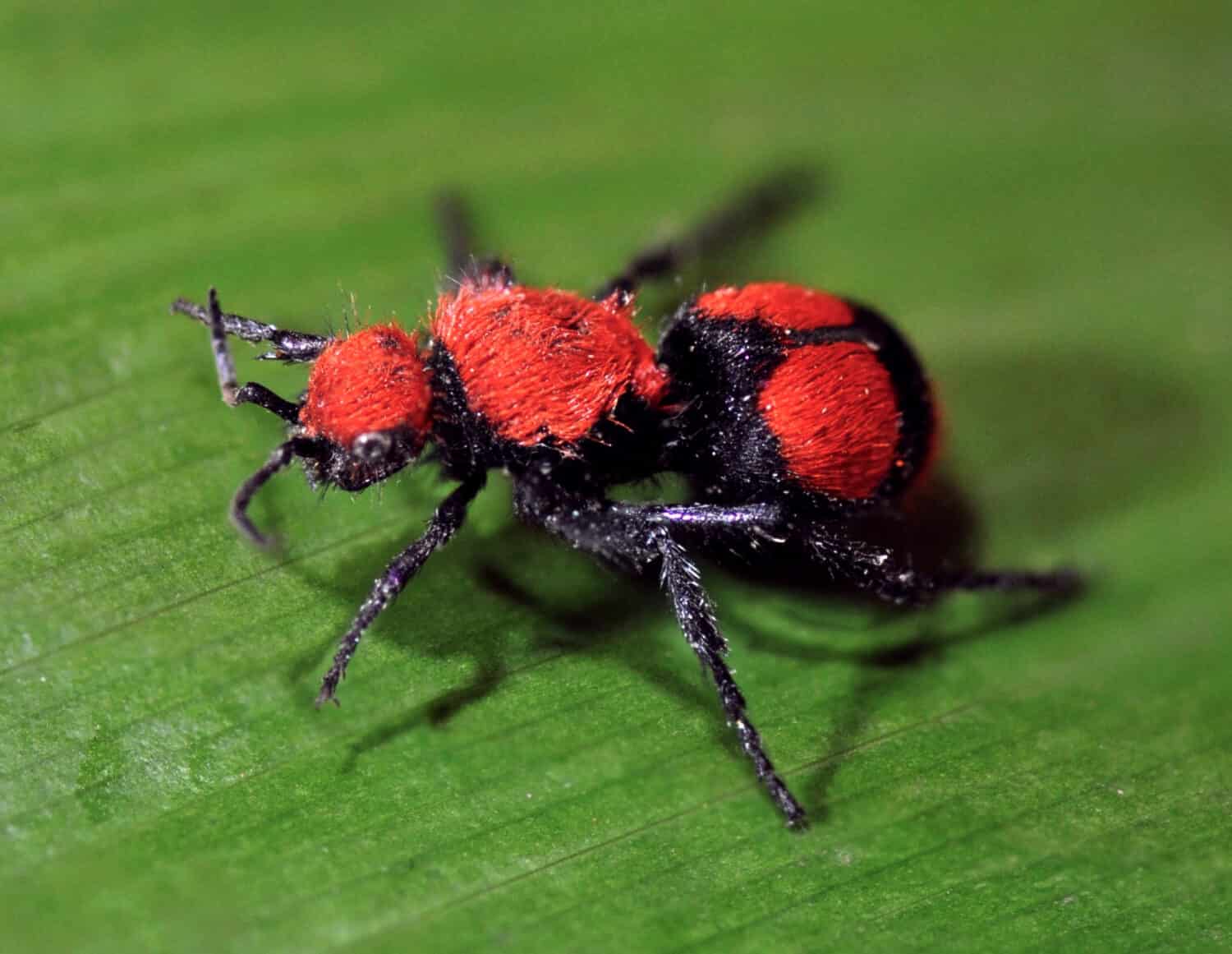
A velvet ant is actually the wingless female of a type of wasp.
©Tarsal Claw/Shutterstock.com
Velvet ants aren’t ants at all, but the wingless females of the Mutillidae family of wasps. These wasps eat nectar and parasitize the larvae of bees that build their nests on or in the ground. Velvet ants are large, fuzzy, energetic, and squeak when they’re disturbed. They can be quite colorful in shades of red, gold, black, or silver, but leave them be. Their sting is memorable and ranked as a 3 on the Schmidt sting pain scale. The intensity can last as long as a half an hour. Velvet ants are nicknamed “cow killers” for a reason, though there are no reports of one actually killing a cow.
Interestingly, a velvet ant’s venom is weak. Because of this, it rarely causes anaphylactic shock in people who are otherwise sensitive to bee or wasp venom. Another good thing about velvet ants is that they’re not aggressive and only sting when they feel they must.
Western Yellow Jacket: Sting Level 2

Western yellow jackets often scavenge for food.
©Ernie Cooper/Shutterstock.com
If you’re going to get stung by a wasp in Colorado, you’ll most likely be stung by the western yellow jacket, or Vespula pensylvanica. This vespid is responsible for 90 percent of the stings delivered in the state. The pain level of the yellow jacket sting is rated at 2.
This insect is easily recognizable by its yellow and black coloration, and it can be told from other yellow jacket species by a yellow ring often found around both eyes. This is especially true of the females, and the females are the wasps you’ll need to worry about. They build papery nests below the ground, and eventually there’s a colony. Yellow jackets collect nectar and other plant material as well as other insects or bits of dead animals for food. Sometimes they’ll simply enter a honey bee hive and collect honey without the bees seeming to notice. Yellow jacket colonies also seem to be tidier than the colonies of other social wasps. These wasps spend much time keeping their nests clean and at the right temperature.
Baldfaced Hornet: Sting Level 2

White facial markings give the baldfaced hornet its name.
©5D2/Shutterstock.com
This hornet gets its name because of the white coloration on its face, and it’s not technically a hornet but a wasp. Hornets are members of the Vespa genus, while these insects belong to Dolichovespula. The scientific name is D. maculata.
Baldfaced hornets are notorious for constructing oval paper nests, often hung from eaves or tree limbs. These nests can be enormous, and some hold as many as 700 worker hornets plus larvae and queen. Unlike many other social insects, worker baldfaced hornets can reproduce, though they only produce males.
Entomologists refer to baldfaced hornet colonies as “sensitive” as opposed to aggressive. They are, after all, only trying to protect their colony. Still, it may be a good idea to have a nest removed if it’s too close to a place frequented by people or pets. It may be hard for a layperson to know what sets a hive off. Some colonies don’t mind people walking right under them. The sound of a screen door opening 20 feet away may send hornets in another colony – or even the same colony that seemed docile the day before – boiling out of the nest.
The sting level of a single baldfaced hornet is 2, which is bad enough, but the situation can become truly dangerous if she calls for help from the rest of the hive. These hornets eat both plant and animal material and are effective biocontrol agents. They just may be too “sensitive” to have very close to your home.
Paper Wasp: Sting Level 2
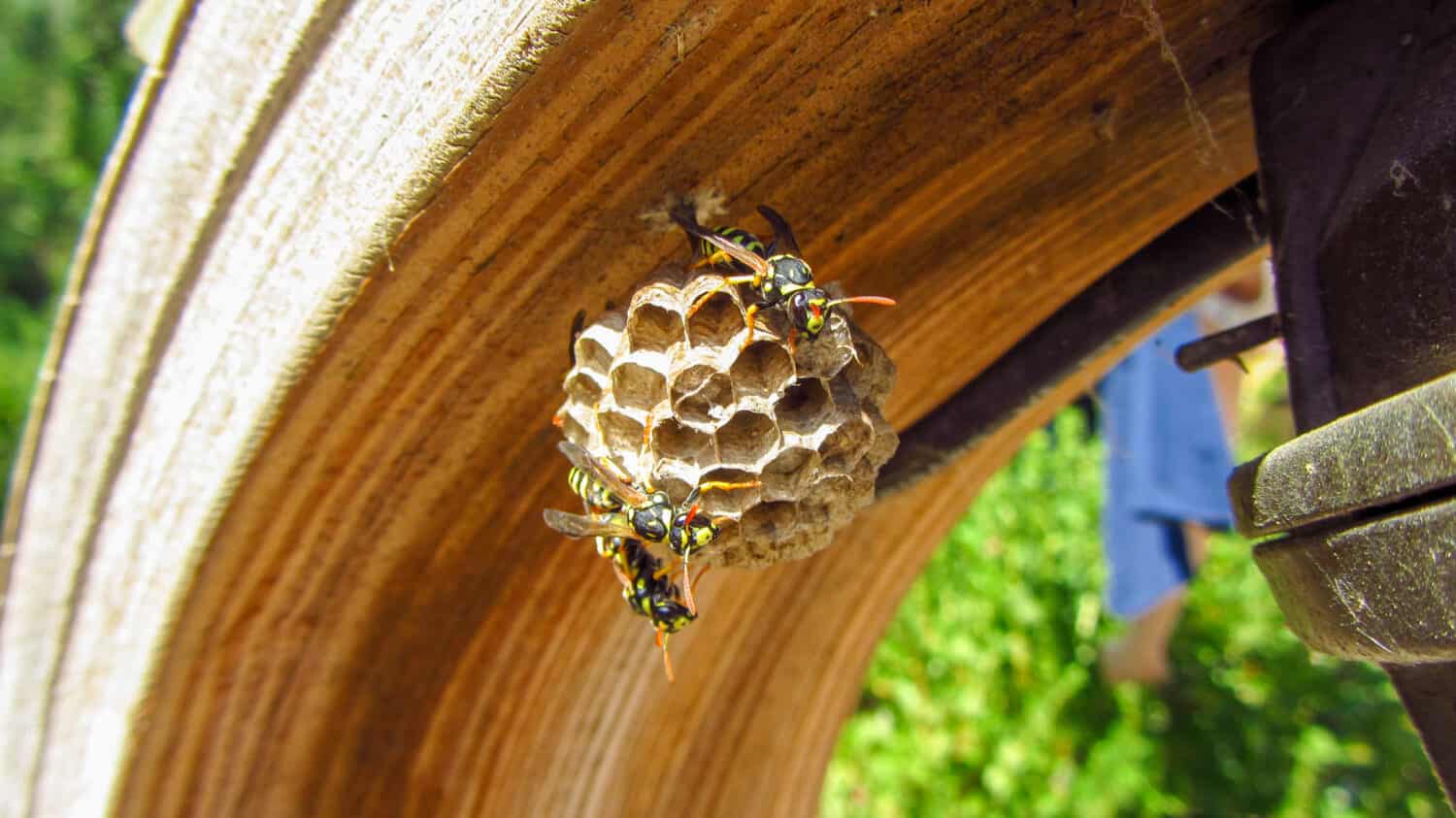
Paper
wasp nests
have open cells and chambers.
©OlgaPS/Shutterstock.com
Like baldfaced hornets, paper wasps create nests made out of mixing plant material with their saliva. They connect these nests to the undersides of door frames and other structures with a stalk. Paper wasp nests aren’t enclosed like baldfaced hornet nests, so you can see into the cells where they lay eggs and raise their larvae. There are about 300 species of paper wasp, and one of the most common in Colorado is the European paper wasp. This wasp, which prefers to live in cities, resembles the western yellow jacket, but it rarely scavenges and prefers its food live. Since these include pests such as cabbage worms, paper wasps should be welcome in the garden if they’re not too numerous. These insects aren’t particularly aggressive, but their sting is also rated as a 2.
Mud Dauber: Sting Level 1
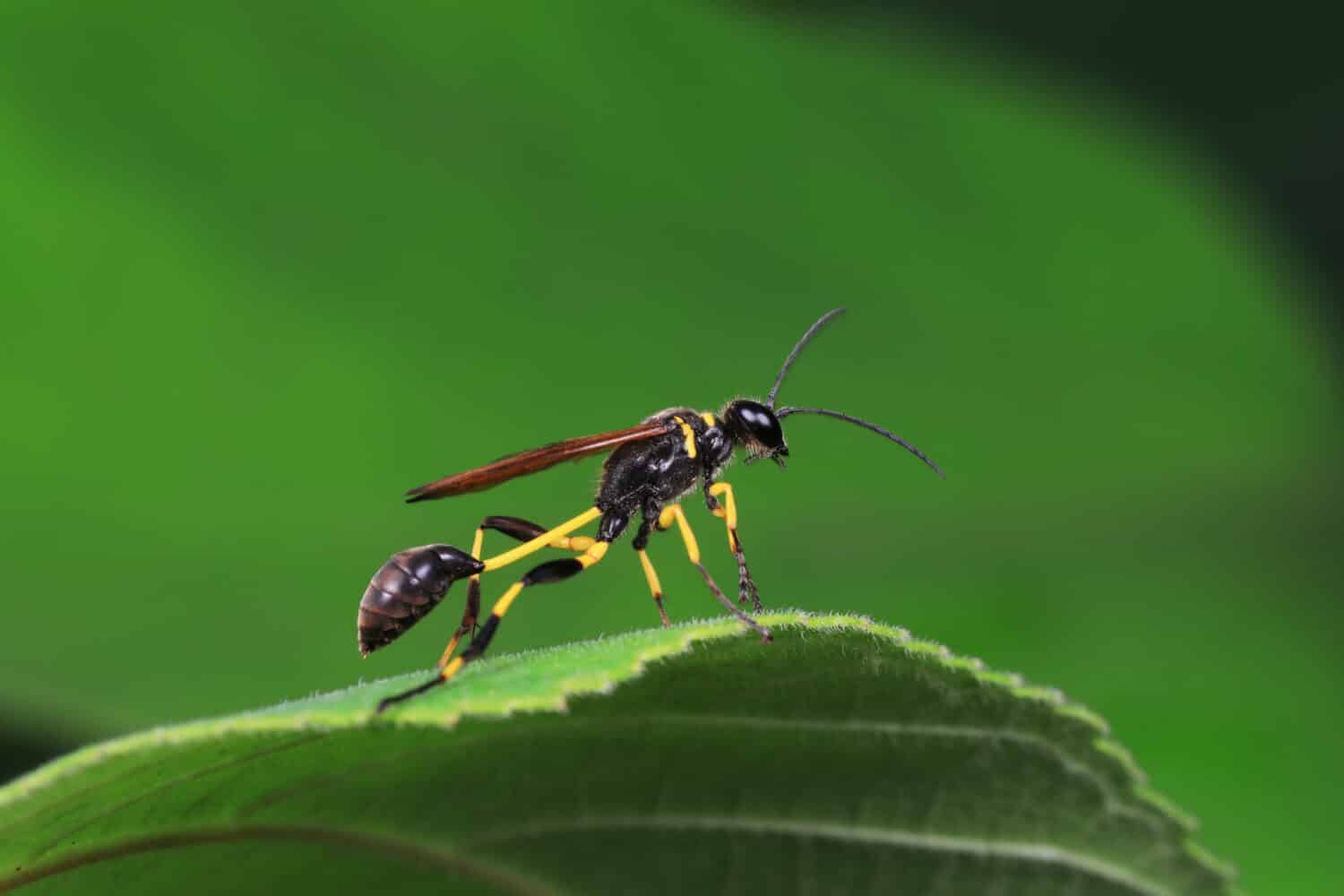
Mud daubers are known for their threadlike waists.
©chinahbzyg/Shutterstock.com
These wasps found in Colorado are known for their threadlike “waists.” They’re a large family of wasps that build their nests out of mud. Like the tarantula hawk, they catch and paralyze spiders to feed their larvae. They are docile and won’t even defend their nests. These nests are often built in out-of-the-way places such as garage walls or corners and resemble organ pipes. It is unusual to be stung by a mud dauber. But when it does sting, the sting is rated a 1. This isn’t as bad as a 2 but is still fairly painful.
Braconid Wasps: Sting Level 0
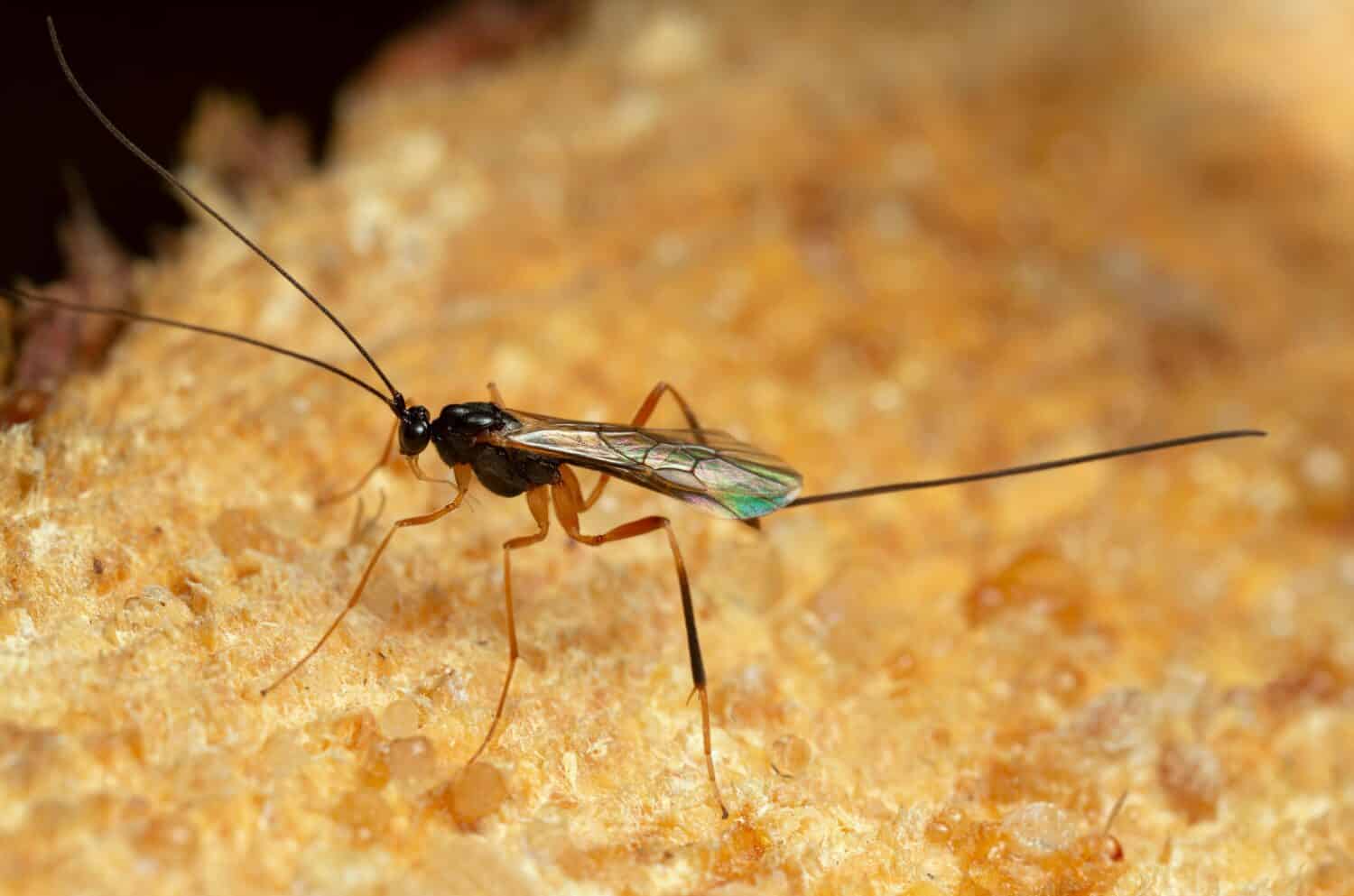
Braconid wasps can be tiny, and they don’t sting.
©Henrik Larsson/Shutterstock.com
Braconids are small, parasitic wasps. There are tens of thousands of species of these wasps, and they famously lay their eggs in or on often troublesome insects and/or their larvae. At no more than 1/8 of an inch long, Aphidus wasps are so tiny they can lay eggs inside aphids. They also eat aphids while they’re at it.
When the wasp eggs hatch, the wasp larvae eat the host from the inside out, which eventually kills it. Because of this, many types of parasitic wasps are considered beneficial and are even sold as forms of biocontrol. If you grow tomatoes in your garden and see a tomato hornworn sprouting a good number of what look like white eggs, leave it alone. The hornworm has stopped eating your tomatoes, and those eggs are actually the larvae of the braconid wasp. Best of all, braconid wasps don’t sting.
Thank you for reading! Have some feedback for us? Contact the AZ Animals editorial team.

